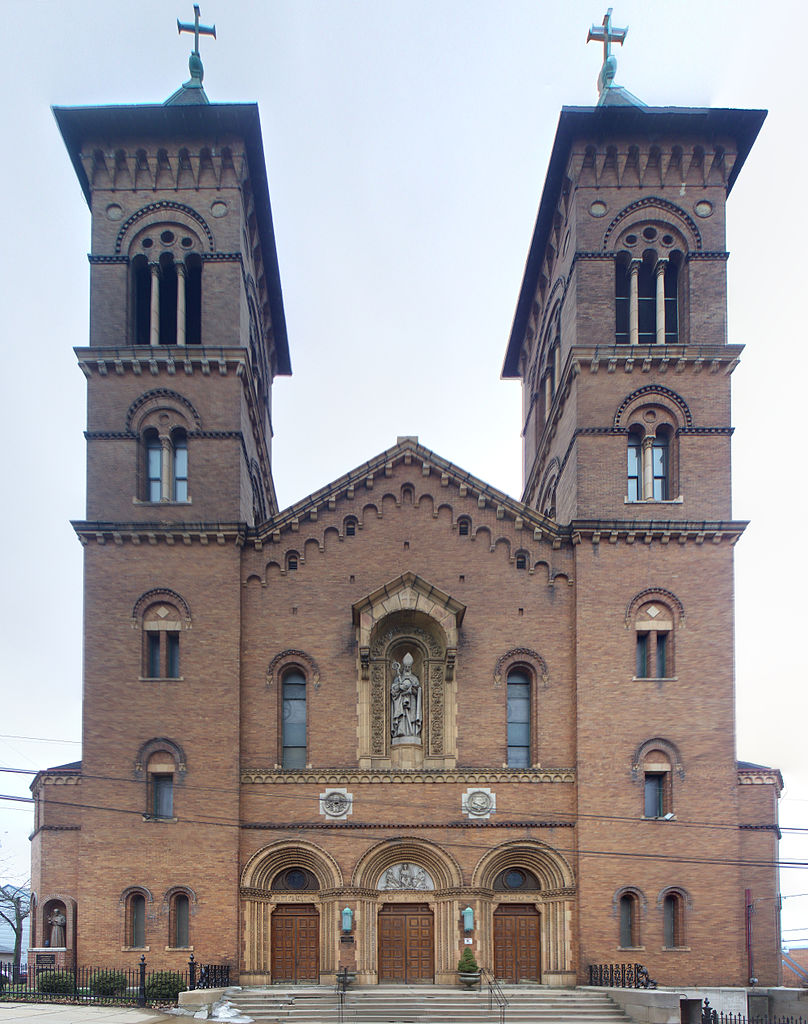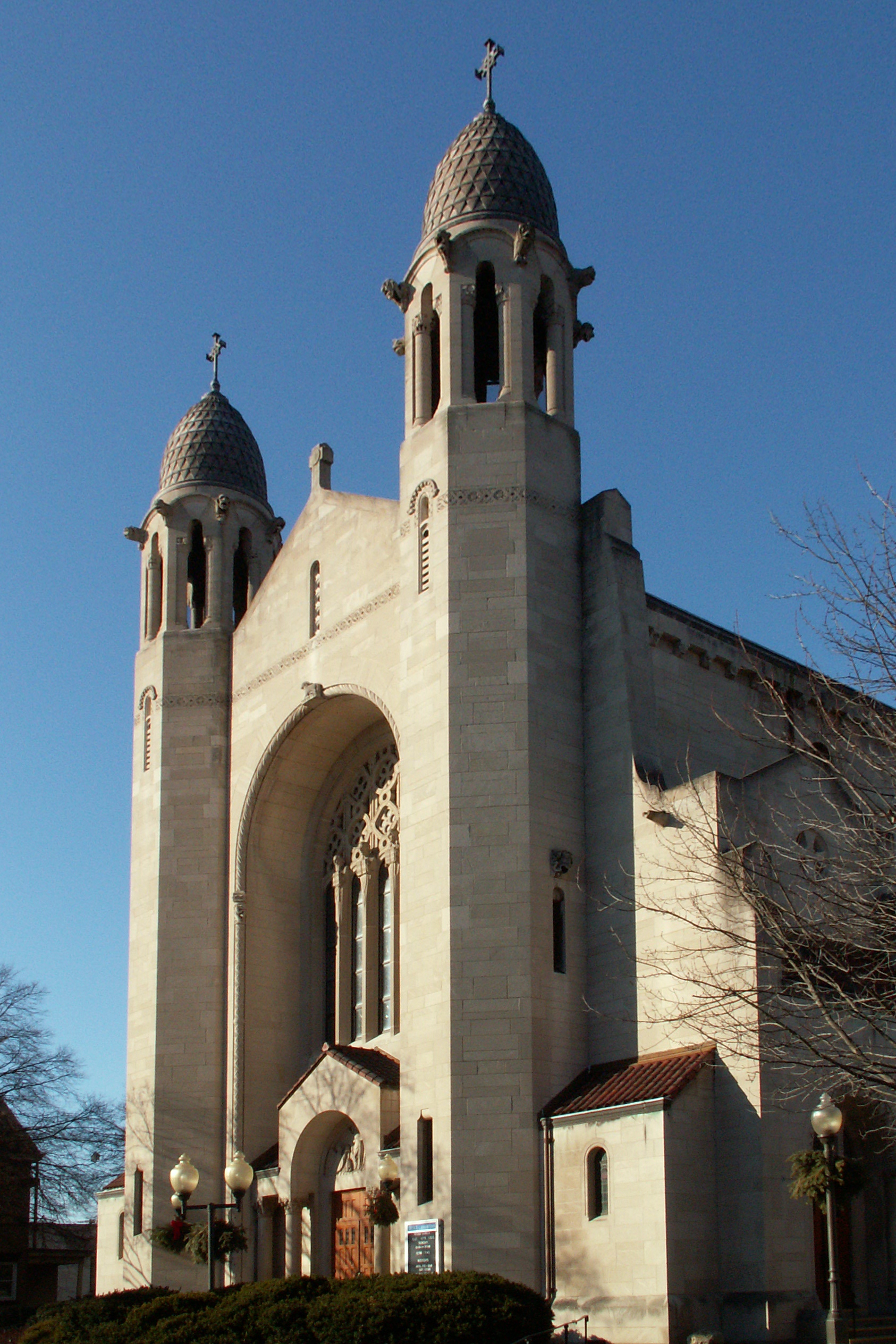
John T. Comes (sometimes spelled Comès) designed a splendid Romanesque church for this congregation. It was built, however, on an improbably narrow street in the most crowded section of Lower Lawrenceville, so it is impossible to see the front as Comes designed it—unless we appeal to technology, merging fifteen separate photographs to produce one overall picture. In spite of the distortion caused by taking the pictures from a low position and altering the perspective, this imperfect picture comes very close to presenting the front of the church as the architect drew it.























